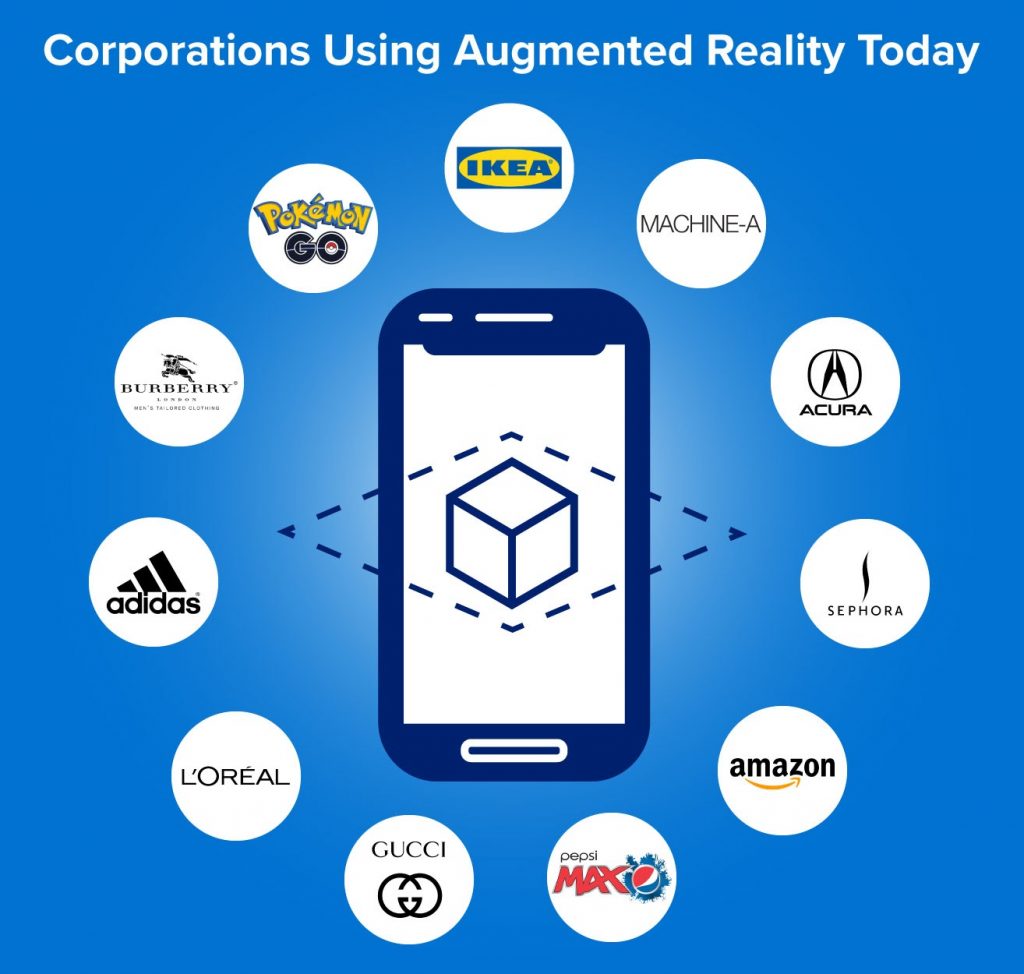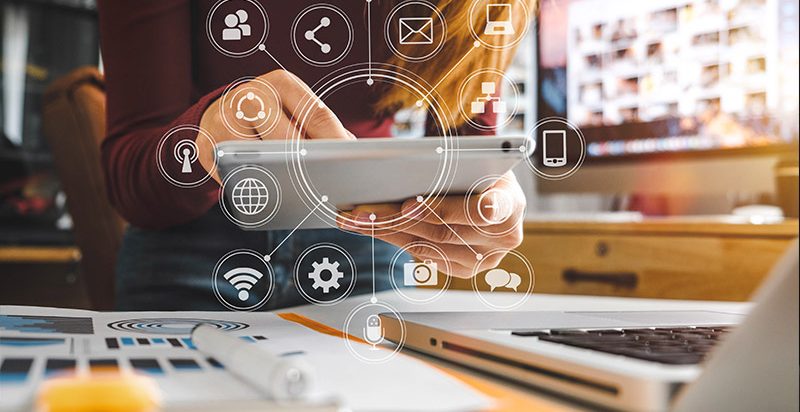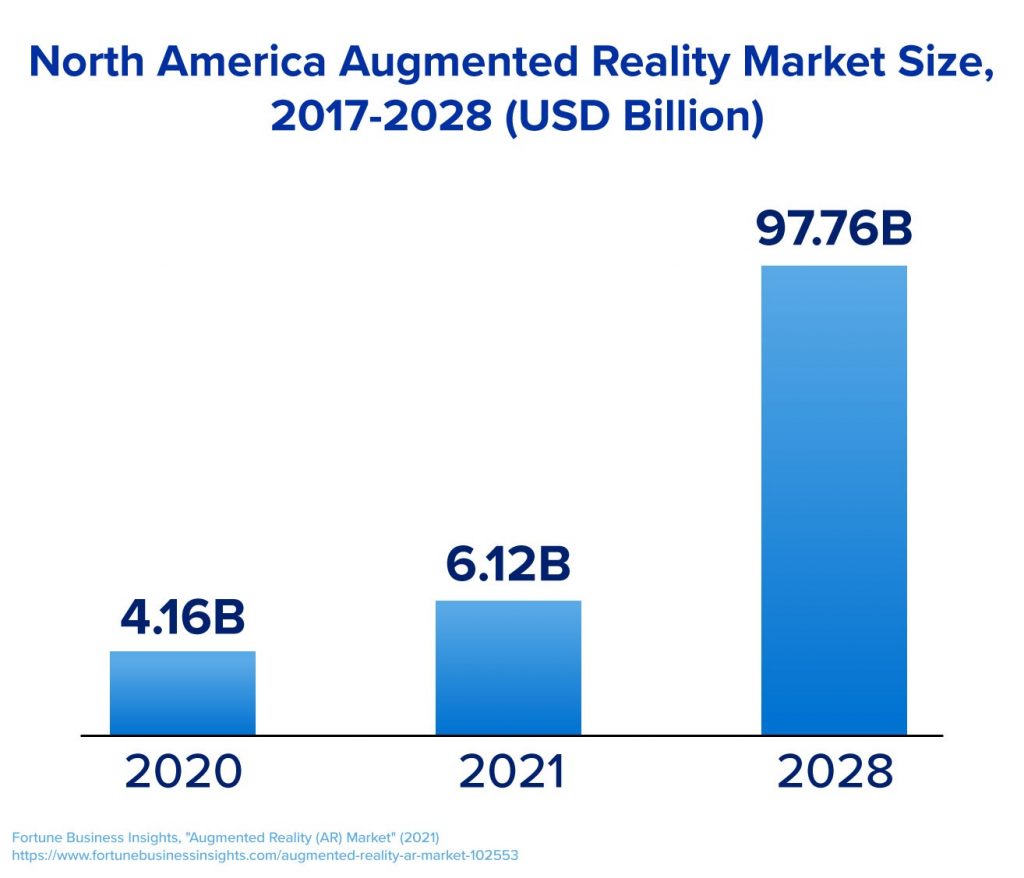Augmented Reality Examples
Now that you know what augmented reality is and how AR can benefit your digital marketing efforts, let’s look at some compelling augmented reality examples executed by real companies. You can also check out our blog to learn more about other digital marketing skills you need to succeed.

L’Oréal
What happens when a legacy beauty brand teams up with an e-commerce giant? A one-of-a-kind augmented reality experience. L’Oréal’s ModiFace experience paved the way for future augmented reality retail experiences by allowing users not only to preview makeup shades on photos and videos of themselves, but also cultivate a complete look using products available for purchase. Instead of trying on individual lipsticks, eyeshadows, foundations, and more, the app took the guesswork out of which shades would best compliment a user’s skin tone by leveraging the latest in augmented reality technology.
Adidas
Imagine not only being able to preview what a pair of shoes might look like on your feet, but also how they’d appear as you’re walking or running. Adidas made this possible through augmented reality with its iOS app. When the pandemic put a halt to in-store shopping in many places across the U.S., consumers came to rely on this technology to inform their purchasing decisions.
Gucci
Gucci was one of the first luxury brands to allow shoppers to try on a pair of sneakers using AR. This approach proved to be a powerful digital marketing tactic that gave consumers a trial run of the shoe before deciding whether or not to buy the product, which ultimately ended up increasing customer satisfaction and decreasing the number of returns.
With so much of our style and appearance portrayed online today, Gucci recently launched the first-ever, digital-only pair of sneakers that shoppers can purchase for between $9 to $12. Once purchased, the owner can take pictures or videos of themselves in their new kicks and share them via social media (the shoes “appear” via filter). Or, they can use the Gucci app to unlock an in-game, downloadable version of their shoes for their Roblox avatar to wear.
Sephora
Sephora is another powerful example of successfully implementing AR into an effective marketing strategy. Sephora’s in-store experience has always provided shoppers with the option to test each product before buying, going as far as allowing shoppers to take home a small test sample of anything they have in stock before buying a larger product. Online, Sephora’s “Virtual Artist” tool allows shoppers to test out shades of lipstick, blush, foundation, eyeshadow, and more without ever having to leave the comfort of their couch. Users can even share photos of themselves sporting a few different shades of certain products with their social media followers. Not only does this help drive purchase decisions by soliciting comments from followers, but it also gives the brand more visibility as users share the experience organically with others.
Burberry
There are plenty of examples of how retailers have brought the experience of shopping in-store to consumers at home through augmented reality. Allowing shoppers to digitally peruse store offerings can be an effective augmented reality marketing tactic, but Burberry decided to use this marketing technique to bring shoppers back into their stores in a recent execution. The brand launched an in-store AR experience to help announce the launch of the line’s new Olympia bag at Harrods in London. The augmented reality experience allowed customers to watch statues come to life and walk around the store with them. Customers could capture the experience via photos and videos, which were then shareable on social media.
Acura
Augmented reality can also use entertainment to shift consumer perceptions about a particular brand. Take Acura, for example. They recently created an AR racing game that allows smartphone users to test drive their various models, but with a twist. By pitting competitors against one another in several racing scenarios, this augmented reality experience gamifies the Acura test drive experience while attracting social media buzz.
Acura’s goal in employing AR was twofold: first, to give people an exciting experience with their vehicles while many dealerships were in lockdown; and, second, to take this opportunity to reverse the perception that “Acuras are Soccer Mom cars,” not high-performing automobiles like BMWs.
Pepsi Max
Pepsi is a brand known for its experiential marketing stunts, so it’s no surprise to hear they were the company behind one of London’s most talked-about augmented reality experiences. In this execution, people standing within a bus shelter saw images of unbelievable things taking place through the glass in front of them. The digital marketers behind this experience pulled out all the stops. These individuals saw everything from a giant robot shooting lasers down the street to tentacles rising from the sidewalk and capturing commuters within its grasp. The experience was meant to ladder up to the “unbelievable” nature of Pepsi Max.
IKEA
Leveraging augmented reality to help drive purchase consideration for furniture is a no-brainer. IKEA has recently taken things a step further with the all-new IKEA Studio app. By using the latest sensory technology in iPhones (LiDAR sensors), the app allows users to see how a piece of IKEA furniture will look in their space. Consumers can also redesign their entire space using IKEA decor and furnishings, from chairs and tables to rugs and even wall colors.
MACHINE-A
This London-based concept store decided to deliver an augmented reality experience to heal London fashionistas’ heartbreak when London’s fashion week was canceled due to the pandemic. The brand created a virtual boutique that could be accessed through QR codes displayed throughout the city. While shoppers couldn’t make a purchase from this experience, it allowed them to view the latest trends and information featured to drive awareness for MACHINE-A’s emerging designers. This augmented reality tactic successfully drove awareness and engagement for the brand and is a prime example of how brands can create memorable experiences with potential consumers to boost brand favorability and recognition.
Pokémon GO
Perhaps the most vivid, powerful augmented reality example is Niantic’s Pokémon GO. The concept is simple: allow users to catch Pokémon by superimposing images of the creatures within the real world. However, the real genius of the experience is GPS integration — the game detects your location and populates Pokémon for you to catch based on where you live. As a result, some rare Pokémon can only be caught in certain parts of the world. This structure led to Pokémon GO forums and communities to track rare Pokémon, and encouraged trades between users to catch them all. To say this augmented reality game has been a huge success is a vast understatement.
*The included logos for corporations using augmented reality today are trademarks of each respective entity and are included here for informational purposes only.

 Live Chat
Live Chat

